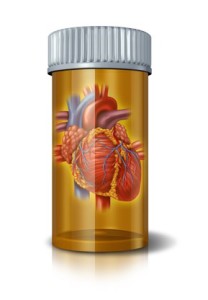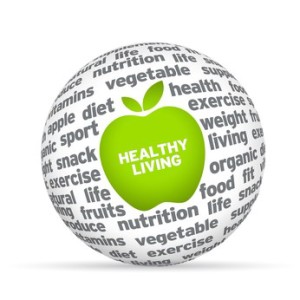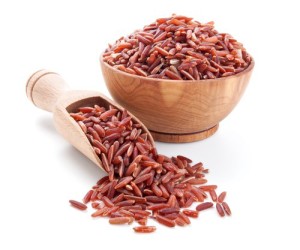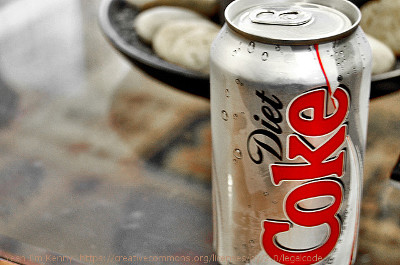Is the Cure Worse Than the Disease?
Author: Dr. Steve Chaney
 Do statins cause memory loss? They are at it again. The medical profession is telling us that yet another study shows that statins are safe, so almost everyone should be taking a statin drug. There is only one problem. That’s not what the study really showed.
Do statins cause memory loss? They are at it again. The medical profession is telling us that yet another study shows that statins are safe, so almost everyone should be taking a statin drug. There is only one problem. That’s not what the study really showed.
Let’s start at the beginning. For people who have already had a heart attack it is pretty clear that statin drugs save lives. If stain drugs were only prescribed for people who have had a heart attack or were at high risk of having a heart attack, I would be a proponent of their use.
However, the guidelines developed by the pharmaceutical and medical industry recommend statin use for millions of Americans who have never had a heart attack and who are at low to moderate risk of ever having a heart attack. That is problematic.
As I documented in a recent “Health Tips From the Professor” the benefits of statins are marginal at best in healthy people who have not yet had a heart attack.
In addition, statins have some significant side effects. For example, up to 5% of people taking statins develop muscle pain and weakness. For most people the muscle pain is merely an inconvenience, but in a small percentage of cases it can lead to serious complications.
More concerning are the required label warnings that statins can lead to memory loss, mental confusion, high blood sugar and type 2 diabetes. In fact, a recent study described in “Health Tips From the Professor” suggests that statins may increase diabetes risk by as much as 46%.
In other words, statins may not kill you, but they sure can make life miserable. For many people, the most troubling aspect of statin use is memory loss. One of the most terrifying aspects of aging is the thought that you might be able to keep your body healthy but lose your mind.
However, recent headlines have proclaimed that we can “forget” about statins causing memory loss (Pardon the pun. I couldn’t resist it). They claim that a recent study has shown that statins don’t actually cause memory loss. The problem is that is not exactly what the study showed. It is only the medical profession’s interpretation of what the study showed.
Why Might Statins Cause Memory Loss?
 Statin drugs block cholesterol synthesis, and cholesterol is an integral part of the myelin sheath that coats our neurons. You can think of myelin as being like the plastic coating on an electrical wire. It is that plastic coating that allows the electrical current to travel from one end of the wire to the other without shorting out. Myelin plays essentially the same role for our neurons.
Statin drugs block cholesterol synthesis, and cholesterol is an integral part of the myelin sheath that coats our neurons. You can think of myelin as being like the plastic coating on an electrical wire. It is that plastic coating that allows the electrical current to travel from one end of the wire to the other without shorting out. Myelin plays essentially the same role for our neurons.
Because of the importance of cholesterol in maintaining the integrity of myelin, there was concern from the earliest days of statin development that it might adversely affect memory. Thus, multiple clinical studies have been performed to determine whether statin use adversely affects memory.
Unfortunately, the previous clinical studies have been inclusive. Some suggested that statins cause memory loss. Others found no correlation between statin use and memory loss. A few actually suggested that statins improved memory. There are a number of reasons why the previous studies came to different conclusions including use of different statin drugs, different duration of the studies, and differences in how memory was measured.
Do Statins Cause Memory Loss?
 This study (Strom et al, JAMA Internal Medicine, doi: 10.1001/jamainternmed.2015.2092) differed from previous studies in that:
This study (Strom et al, JAMA Internal Medicine, doi: 10.1001/jamainternmed.2015.2092) differed from previous studies in that:
- It focused on short term memory loss, and
- It also included a group of patients who were using non-statin cholesterol lowering drugs.
The study drew on patient data from the online Health Improvement Network database collected from general practitioners offices throughout England between July 7, 2013 and January 15, 2015. The study compared 482,543 statin users with 482,543 matched controls using no cholesterol lowering medication and 26,484 patients using non-statin cholesterol lowering medications. The average age of the participants in this study was 63. Memory loss within the first 30 days after initiation of drug therapy was assessed by scanning the medical records in the database for codes related to memory loss.
The results were stunning!
- Stain drug users were 4-fold more likely to experience short term memory loss within the first 30 days than non-users, and the likelihood of memory loss was dose dependent.
- The users of non-statin cholesterol lowering drugs were also 4-fold more likely to experience short term memory loss within the first 30 days than non-users.
- As you might expect there was no significant difference in memory loss between users of the statin and non-statin cholesterol lowering drugs.
How Were The Results Interpreted?
The results seemed to be pretty clear cut, but it was a somewhat misleading interpretation of the results that was widely publicized. The authors of the article correctly pointed out that there are two possible interpretations of these results. Either…
- All cholesterol lowering drugs cause acute memory loss….or
- The association of memory loss with cholesterol lowering drugs is the result of something called “detection bias”.
Let me explain. Some memory loss is fairly common for people in their 60s and beyond. The term “detection bias” simply means that the patients might have been more acutely aware of memory loss because they were monitoring themselves for side effects to the drug they just started taking.
Of course, the medical profession is so confident in the benefits of statins that they focused on the second interpretation, and that is the one that you heard about in all of the press releases about this study. If you believe that the self-reported memory loss in this study was entirely due to detection bias, then the most logical interpretation of the study is that statin drugs really don’t cause memory loss.
However, I consider the first interpretation to be the most likely of the two. If use of cholesterol lowering drugs were associated with a 25% or 50% increase in memory loss, detection bias could have been a credible interpretation of the data. However, a 4-fold increase in memory loss is hard to ascribe to detection bias alone.
Furthermore, the first explanation is fully consistent with what we know about myelin. Because of the importance of cholesterol in maintaining the integrity of the myelin sheath, it is logical that any drug that dramatically lowers cholesterol levels could have an adverse effect on cognitive function.
Are There Other Options Besides Statin Drugs?
Because of the marginal benefits in healthy people and the multiple side effects, some experts are starting to step up and say that statins may be overprescribed. For example, Dr. Roger Blumenthal, MD, a professor and director of the Ciccarone Preventive Cardiology Center at Johns Hopkins recently said: “Statin therapy should not be approached like diet and exercise as a broadly based solution for preventing coronary heart disease. These are lifelong medications with potential, although rare, side effects, and physicians should only consider their use for those patients at greatest risk…”
So, what are the alternatives?
#1: Lower Cholesterol Naturally With Some TLC
 The National Heart Lung & Blood Institute recommends that something called Therapeutic Lifestyle Change or TLC should always be tried first for patients with elevated cholesterol, and that statins only be used if the lifestyle approach fails – a message that seems to have gotten lost in the translation in many doctor’s offices. The TLC recommendations are:
The National Heart Lung & Blood Institute recommends that something called Therapeutic Lifestyle Change or TLC should always be tried first for patients with elevated cholesterol, and that statins only be used if the lifestyle approach fails – a message that seems to have gotten lost in the translation in many doctor’s offices. The TLC recommendations are:
- Add 2 grams per day of plant stanols and sterols to your diet. In most cases some that will require some degree of supplementation.
- Eat less than 7 percent of your daily calories from saturated fat
- Eat less than 200 mg a day of cholesterol
- Make sure that you get 10-25 grams per day of soluble fiber.
- Get only 25–35 percent of daily calories from total fat (this includes saturated fat calories)
- Consume only enough calories to reach or maintain a healthy weight
- In addition, you should get at least 30 minutes of a moderate intensity physical activity, such as brisk walking, on most, and preferably all, days of the week.
There is ample evidence that implementation of these lifestyle changes will reduce cholesterol levels and reduce the risk of heart attack and stroke without any side effects. The reduction in cholesterol levels is more modest than what can be achieved with cholesterol lowering medications, but perhaps that is the point. Perhaps the medical profession is being too aggressive in reducing cholesterol levels with drug therapy.
If you are a bit overwhelmed by the TLC recommendations, there is good news. Even one or two of the lifestyle changes mentioned above can substantially reduce your risk of heart attack or stroke. For example, in a previous “Health Tips From the Professor,” apple a day keeps statins away, I reported on a study claiming that simply eating one apple a day would be just as effective as statins at reducing cardiovascular deaths.
#2: Reduce Other Risk Factors Associated with Heart Disease
Elevated cholesterol is not the only risk factor associated with heart disease. In fact, many experts feel that it isn’t even the most important risk factor. High blood pressure, high triglycerides, inflammation and damage to the endothelial lining of our arteries are other important risk factors for heart disease. If you are leery about using statins to reduce your cholesterol levels, you might want to explore other natural approaches to reducing heart disease risk. For example:
- Omega-3s reduce triglyceride levels, blood pressure and inflammation. As I have reported previously (https://chaneyhealth.com/healthtips/fish-oil-really-snake-oil/), some studies suggest that they are as effective as statins at reducing heart attack risk
- Nitrate from foods such as beetroot and spinach reduce blood pressure and improve endothelial health. This is also a topic I have covered in a previous “Health Tips From the Professor” Nitric Oxide Benefits Side Effects.
- Resveratrol and related polyphenols reduce inflammation and improve endothelial health.
I could go on, but you get the point. There are other natural approaches for reducing heart attack risk. Statins and other cholesterol lowering drugs are not the only game in town.
Red Yeast Rice Yeast Rice Side Effects?
 However, just because a supplement is natural doesn’t necessarily mean that it is either safe or effective. Red yeast rice is a perfect example. Many people think of red yeast rice as a natural way to reduce cholesterol levels. They believe red yeast rice side effects are non-existent. Nothing could be further from the truth!
However, just because a supplement is natural doesn’t necessarily mean that it is either safe or effective. Red yeast rice is a perfect example. Many people think of red yeast rice as a natural way to reduce cholesterol levels. They believe red yeast rice side effects are non-existent. Nothing could be further from the truth!
The active ingredients in red yeast rice are a class of compounds called monacolins, which are close analogs of the statin drugs. In fact, the most abundant monacolin, monacolin K, is identical to the statin drug lovastatin.
That destroys one myth. If a red yeast rice product contains as much monacolin K as a lovastatin pill, it would have the same benefits and the same side effects.
It only gets worse! In fact, you have no way of knowing how much monacolin K is in your red yeast rice supplement. Because lovastatin is a drug the manufacturers are caught in a Catch-22 situation. If the manufacturers were to actually standardize or disclose the levels of monacolin K in their product, the FDA would consider it an unapproved drug.
When manufacturers don’t standardize their active ingredients bad things happen. How bad, you might ask? A recent study analyzed the concentration of active ingredients in 12 commercially available red yeast rice supplements (R. Y. Gordon et al, Archives of Internal Medicine, 170: 1722-1727, 2015). The results were appalling:
- Total monacolins in the supplements ranged from 0.31 to 11.15 mg/capsule.
- Monacolin K (lovastatin) ranged from 0.10 to 10.09 mg/capsule.
- To put that into perspective therapeutic doses of lovastatin range from 10 to 80 mg/day.
It gets even worse! The study also measured levels of a toxin called citrinin that is produced by a fungus and is potentially toxic to the kidneys. This is not a toxin that you would find in a pharmaceutical product like lovastatin, but it was present in high levels in one third of the red yeast rice formulations tested.
To sum it all up, if you were to go out and purchase a red yeast rice supplement.
- You might get a batch with no active ingredients. It wouldn’t have any of the side effects of a statin drug, but it wouldn’t have any efficacy either.
- You might get a batch that would have the same efficacy and the same side effects as a low dose statin drug.
- You would have a 33% chance of getting a batch that was contaminated with a toxin that you would never find in a statin drug.
I don’t know about you, but after reading that study I have no desire to ever try a red yeast rice supplement.
Do statins cause memory loss?
The Bottom Line
- For people who have already had a heart attack statin drugs are clearly beneficial. They save lives.
- If you haven’t already had a heart attack and your doctor prescribes a statin, you may want to have a serious discussion with your doctor about alternative approaches for reducing heart attack risk. You may even want to seek a second opinion from a doctor with a more holistic orientation. Recent research suggests that statin drugs:
- Are of marginal efficacy in low to moderate risk individuals who have not suffered a heart attack.
- Can cause muscle pain and weakness, which can lead to serious illness in a small percentage of the cases.
- May increase the risk of developing type 2 diabetes by up to 46%.
- May cause memory loss and mental confusion.
- A recent study showed that both statin and non-statin cholesterol lowering drugs caused 4-fold greater short term memory loss in older adults compared to matched patients who were not taking statin medications.
- The medical profession has chosen to interpret this study as showing that statin drugs don’t cause short term memory loss, and that is the interpretation that has been widely reported in the press. I feel that the more logical interpretation of the data is that both statin and non-statin cholesterol lowering drugs cause short term memory loss.
- Fortunately, there are natural approaches for reducing cholesterol levels and heart disease risk without any side effects. For example, the National Heart Lung and Blood Institute recommends a natural approach called Therapeutic Lifestyle Change or TLC .
- There are also natural approaches for reducing other risk factors for heart disease such as high blood pressure, high triglycerides, and inflammation. These include things like omega-3 fatty acids, nitrate from vegetables like beetroots and spinach, and polyphenols like resveratrol just to name a few.
- However, natural is not always better. Red yeast rice, for example, is neither safe nor effective. For more details, read the article above.
These statements have not been evaluated by the Food and Drug Administration. This information is not intended to diagnose, treat, cure or prevent any disease.






















